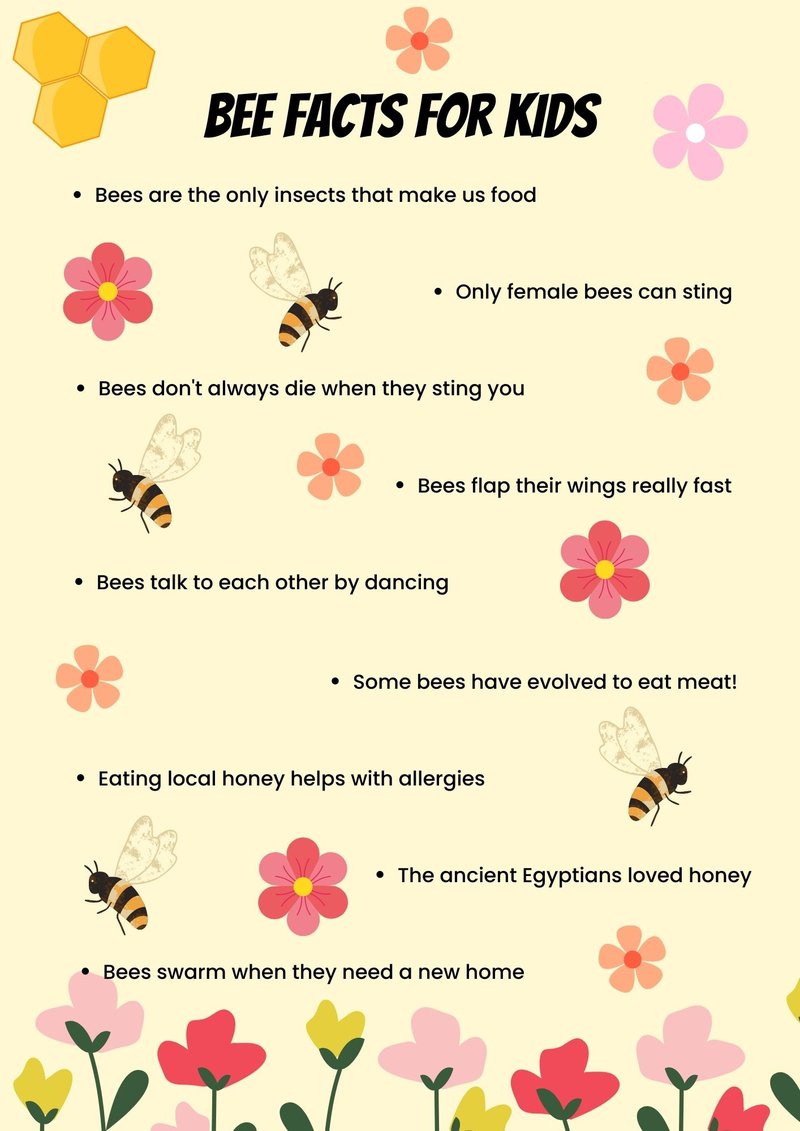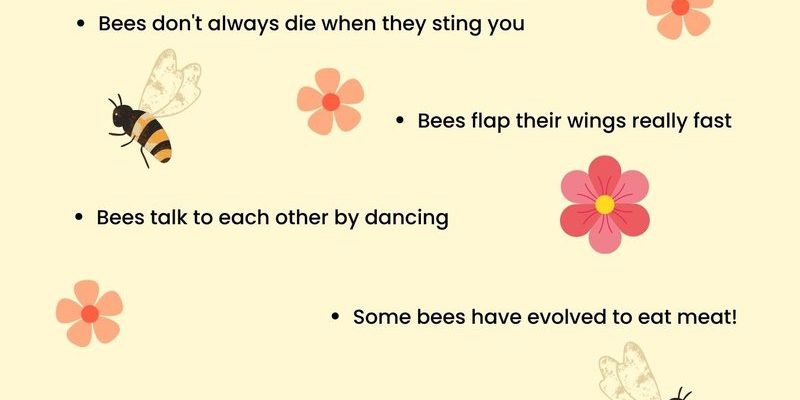
You might be surprised to learn just how many different types of bees there are. From the familiar honeybee to the solitary mason bee, each species has its own special traits. Understanding these little guys can be a joyful venture, and who knows, you might even find a newfound respect for the buzzing sound you hear on a sunny day. So, grab a comfy seat, and let’s explore some delightful bee facts!
1. Bees Are Not All the Same!
You might think of bees as one big group, but they come in many shapes and sizes! There are over 20,000 species of bees worldwide. Isn’t that wild? Among these, honeybees and bumblebees are the most familiar, but here are a few lesser-known types:
- Solitary Bees: Unlike honeybees that live in hives, solitary bees prefer to live alone. They’re often found nesting in small holes or tunnels.
- Mason Bees: These busy little bees use mud to build their nests. They’re excellent pollinators and are great for your garden!
- Leafcutter Bees: Named for their unique habit of cutting leaves to line their nests, these bees are also fantastic at pollination.
Each bee species has its own special traits. For instance, honeybees live in large colonies, thriving together, while solitary bees keep things more independent. You might find it interesting that some bees even have different ways of communicating!
2. The Buzz About Their Communication
Have you ever heard about the “waggle dance”? It’s one of the coolest behaviors bees display! Honeybees use this unique dance to communicate the location of flowers to their hive mates. When a bee finds a great flower patch, it returns to the hive and performs a little shimmy. The direction and duration of the dance let other bees know exactly where to go!
Here’s how it works:
- Bees waggle their bodies in a figure-eight pattern.
- The angle they dance at indicates the direction of the flowers relative to the sun.
- The longer the dance, the further the flowers are!
Isn’t that amazing? This way, they not only share food sources but actually help increase the efficiency of the entire hive. You might wonder how we even learned about this dance—it’s all thanks to dedicated scientists who observed bees over the years!
3. Bees and Their Love for Flowers
When you think of bees, you probably think of flowers, and for a good reason. Bees play a vital role in pollinating many plants, which helps them produce fruits and seeds. In fact, it’s estimated that about one-third of the food we eat relies on pollination. Imagine biting into a juicy apple or a sweet strawberry—bees helped make that possible!
Here’s a fun fact: bees are attracted to specific colors. They love blue and yellow flowers, which makes sense because these colors stand out to them. Plus, bees can see ultraviolet light, which we can’t; this means they can spot flowers that look plain to us but are full of nutrients for them!
Also, did you know that a single bee can visit over 2,000 flowers in a day? They collect nectar and pollen, which they then bring back to their hives. It’s a busy life, but it’s essential for our veggie patch and fruit trees!
4. The Sweet World of Honey
Let’s talk about honey, the delicious result of a bee’s hard work! Honeybees transform nectar from flowers into honey through a fascinating process. After collecting nectar, they store it in their stomachs, where enzymes start breaking it down. When they return to the hive, they regurgitate the nectar, passing it to other worker bees. This continues until the nectar becomes honey.
But why do bees make honey? Here’s the thing—it serves as their food source during the colder months when flowers aren’t blooming. So, when you drizzle honey on your toast, remember it’s not just a sweet treat; it’s a tasty survival strategy for bees!
Additionally, honey has natural antibacterial properties and can be used as a natural remedy for sore throats. While it might be tempting to think of honey as just a food, it’s really a little jar of bee magic!
5. Bees Are in Trouble—What Can We Do?
Unfortunately, bees face many challenges today. Factors like habitat loss, pesticides, and climate change are threatening their populations. This can have serious consequences for our ecosystem and food supply. You might be wondering what you can do to lend a helping hand.
Here are a few simple ways to help protect bees:
- Plant Bee-Friendly Flowers: Choose flowers that bloom at different times throughout the year to provide bees with food from spring to fall.
- Avoid Pesticides: If you’re gardening, consider using natural pest control methods instead of chemicals that can harm bees.
- Set Up a Bee Hotel: Providing a safe nesting place for solitary bees can help boost their populations.
Every little action counts! By creating a bee-friendly environment in your garden or community, you’re playing an important role in supporting these incredible insects.
6. Fun Bee Trivia for Kids
Want to wow your friends with some cool bee trivia? Here are a few fun facts that are sure to impress:
- Queen Bees Are Unique: A queen bee can lay up to 2,000 eggs a day!
- Bees Recognize Faces: Believe it or not, bees can recognize human faces, helping them distinguish between friends and foes.
- They Have Five Eyes: Bees have two large compound eyes and three smaller ones on top of their heads to see in all directions.
Sharing these facts can make you the go-to bee expert among your friends! It’s a fun way to spread awareness about the importance of these buzzing buddies.
7. Why Bees Matter More Than You Think
You might be surprised to learn how essential bees are beyond just pollination. They contribute significantly to maintaining biodiversity. By helping a variety of plants reproduce, bees ensure that ecosystems stay healthy. Healthy ecosystems provide habitats for countless other species, creating a thriving environment for all living creatures.
So next time you see a bee buzzing around, take a moment to appreciate its hard work. They do so much more than just make honey—they help keep our planet balanced. Whether you’re a kid just starting to learn about nature or a grown-up who appreciates the environment, understanding bees is a step toward protecting our world.
In conclusion, bees are truly remarkable little creatures. From their complex social structures to their vital role in our food systems, there’s so much to learn and love about them. By sharing these fun facts, you’re not only expanding your knowledge but also spreading a little appreciation for these busy pollinators. So let’s protect our bees, one buzz at a time!

